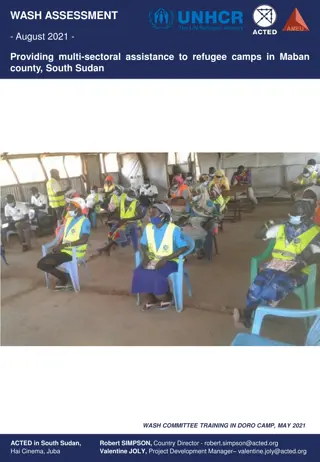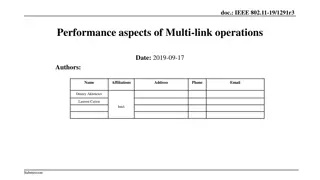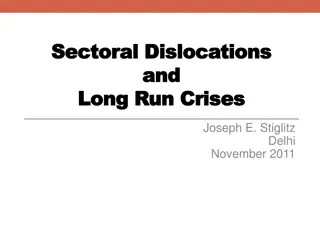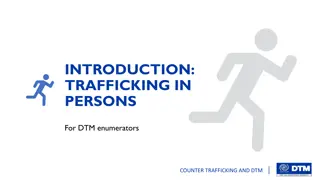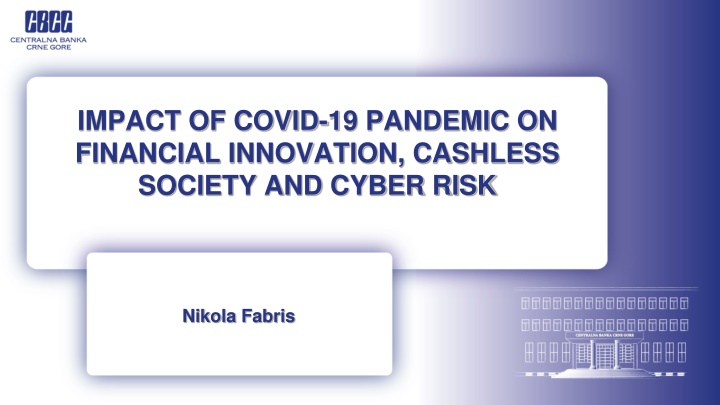
DTM Operations Overview and Multi-Sectoral Location Assessment
DTM (Displacement Tracking Matrix) plays a crucial role in tracking movement flows, mobility, and cross-sectoral needs in various emergency settings globally. This briefing explains the components, strengths, limitations, and the value of DTM data for partners like Clusters, Authorities, and Donors. With operations in 80 countries, DTM offers valuable insights into displacement, migration, and emergency response situations.
Download Presentation

Please find below an Image/Link to download the presentation.
The content on the website is provided AS IS for your information and personal use only. It may not be sold, licensed, or shared on other websites without obtaining consent from the author. If you encounter any issues during the download, it is possible that the publisher has removed the file from their server.
You are allowed to download the files provided on this website for personal or commercial use, subject to the condition that they are used lawfully. All files are the property of their respective owners.
The content on the website is provided AS IS for your information and personal use only. It may not be sold, licensed, or shared on other websites without obtaining consent from the author.
E N D
Presentation Transcript
IMPACT OF COVID-19 PANDEMIC ON FINANCIAL INNOVATION, CASHLESS SOCIETY AND CYBER RISK Nikola Fabris
Structure of the paper Introduction Impact of the pandemic on financial innovations and FinTech companies Pandemic and cryptocurrencies Impact of the pandemic on the development of a cashless society Cyber risk and the pandemic influence on their development Concluding remarks 15.3.2025. 2
Introduction The twenty-first century has been marked by numerous challenges The COVID-19 pandemic has led to fundamental changes in the way people live and work Epidemics and pandemics are nothing new and people have been facing them since the early times They claimed a large number of lives and destroyed entire economies and countries 15.3.2025. 3
Financial innovations and fintech companies The global financial crisis has been one of the generators of change and financial innovation Social distancing, lockdowns and other restrictions have given a strong stimulus to the digitalisation of payments and greater use of financial innovation Many studies confirmed that FinTechs showed a significant degree of resilience during the global pandemic, despite increased costs 15.3.2025. 4
Changes in the value of financial innovation services (H12020/H12019) Source: World bank and Cambridge Center for Alternative Finance (2021) The GlobalCovid-19 FinTech Market Rapid Assessment Study . 15.3.2025. 5
Financial innovations and FinTech companies Increased use of mobile phones for payments Increased growth of e-payments and e-wallets during the pandemic Financial innovations triggered increased inclusion The growth in demand for the fintech sector services Increased cooperation between banks and fintech companies 15.3.2025. 6
Financial innovations and FinTech companies Most of the FinTech companies managed to seize the opportunities and successfully respond to the challenges posed by pandemics Most of them changed their business models : reducing fees, changing qualification criteria, and easing payment requirements The World Bank study (2021) found that 60% of the surveyed FinTech companies launched new products or services, and that as many as 32% of the remaining 40% planned to introduce new products or services 15.3.2025. 7
PANDEMIC IMPACT ON CRYPTOCURRENCIES One of the biggest innovations in the financial system in the last fifty years has been the emergence of private cryptocurrencies In 2012, there were only 6 cryptocurrencies, while today there are over 2,000 and they keep growing It has been shown that from the idea of being a form of money independent from governments (central banks) they have become more of a speculative form of electronic securities Cryptocurrencies do not have the basic characteristics of money 15.3.2025. 8
PANDEMIC IMPACT ON CRYPTOCURRENCIES There are many risks associated with cryptocurrencies: Consumers may suffer large losses There are no proper regulations Jeopardizing market integrity due to manipulation Financial crime There are nothing behind them 15.3.2025. 9
Bitcoin value 70,000 60,000 50,000 40,000 30,000 20,000 10,000 0 2021 2021 2020 2020 2020 2019 2019 2019 2018 2018 2018 2017 2017 2017 2016 2016 2016 2015 2015 2014 2014 2014 2013 2013 2013 2012 2012 2012 2011 2011 2011 2010 2021 2015 15.3.2025. 10
Bitcoin value in past 6 months 15.3.2025. 11
PANDEMIC IMPACT ON CRYPTOCURRENCIES There is no evidence that cryptocurencies have brought benefits to the society It is unlikely that private digital cryptocurrencies will become a widely accepted means of payment, but it is likely that some central banks will start issuing their own digital currencies 15.3.2025. 12
Conclusion The COVID-19 global pandemic has been an unprecedented event in the last 100 years It has seriously shaken the global economy and posed serious challenges to businesses around the world Like all crises, this one has given rise both to innovations and opportunities A new normal in the financial sector will be the growth of digitalisation, the emergence of financial innovations and new participants, the so-called FinTech companies Although being the biggest financial innovation, cryptocurrencies have not become what their original purpose was money independent of central banks 15.3.2025. 13
Thank you for your attention 15.3.2025. 14




